The Two RV
Gypsies: Full-Time RVers
 in
Chicken Alaska in 2009
in
Chicken Alaska in 2009
 in
Chicken Alaska in 2009
in
Chicken Alaska in 2009|
The Two RV
Gypsies: Full-Time RVers  in
Chicken Alaska in 2009 in
Chicken Alaska in 2009 |
 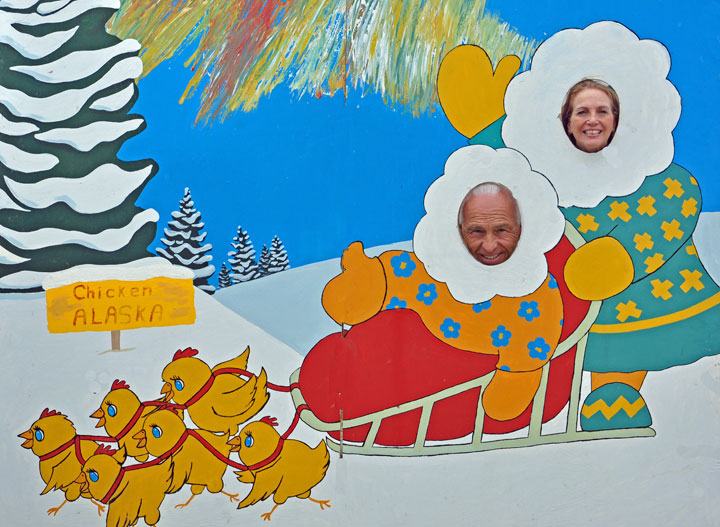  |
Scenery
on the road from Tok, Alaska to Chicken, Alaska - the curvy dirt and gravel
road extended for miles up the hill and around corners. Fun, Fun, Fun
and more dirt on the car. |
|
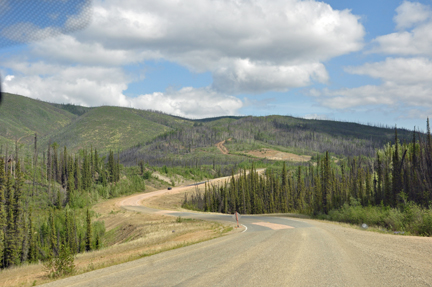 |
|
 The Fortymile Caribou Herd: Imagine
the sight and sound of 500,000 caribou moving across the tundra as they
did in this area in the 1920's before over-hunting, severe winters, and
high predation caused a dramatic decline, changing the landscape completely.
By 1973, the herd numbered only 6,500 caribou. The entire ecosystem was
dependent of the massive Fortymile herd, the center of the food chain. When
the herd declined, the entire ecosystem suffered. Caribou was the mainstay
of the wolf's diet with each wolf eating at least 25 caribou a year. With
fewer caribou, wolves killed more moose so the moose and wolf populations
also declined, as did wolverines, coyotes, foxes, common ravens, gray jays
and black-billed magpies. Now caribou are seldom seen here. The Fortymile Caribou Herd: Imagine
the sight and sound of 500,000 caribou moving across the tundra as they
did in this area in the 1920's before over-hunting, severe winters, and
high predation caused a dramatic decline, changing the landscape completely.
By 1973, the herd numbered only 6,500 caribou. The entire ecosystem was
dependent of the massive Fortymile herd, the center of the food chain. When
the herd declined, the entire ecosystem suffered. Caribou was the mainstay
of the wolf's diet with each wolf eating at least 25 caribou a year. With
fewer caribou, wolves killed more moose so the moose and wolf populations
also declined, as did wolverines, coyotes, foxes, common ravens, gray jays
and black-billed magpies. Now caribou are seldom seen here. |
|
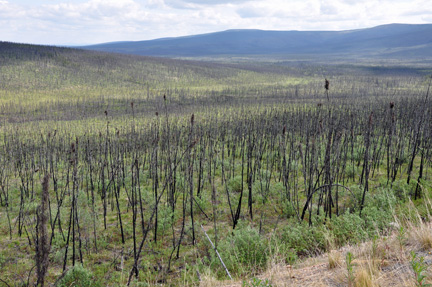 |
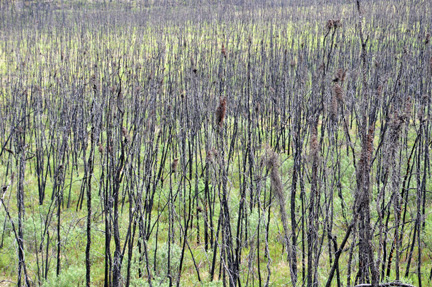 |
Below: Much of the road
to Chicken, Alaska had forestry areas that were previously destroyed by
major fires. |
|
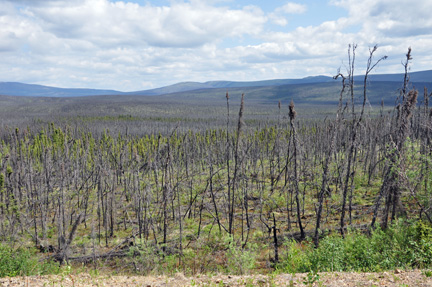 |
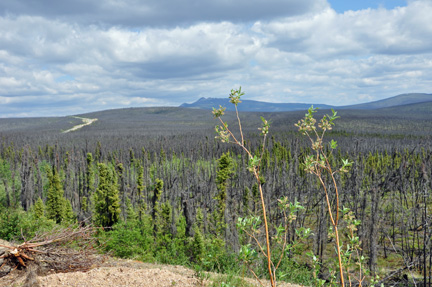 |
Below: Airport Road in
commercial downtown Chicken, Alaska. It consists of only three (3) businesses. |
|
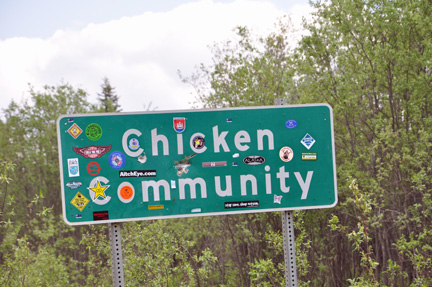 |
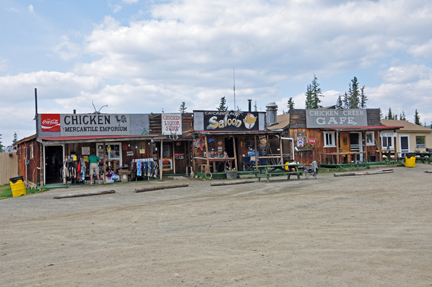 |
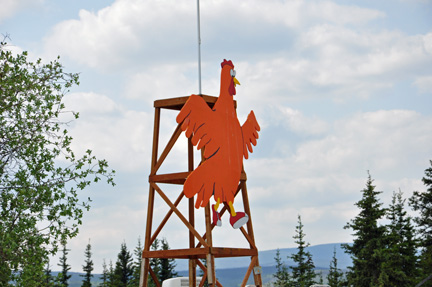 |
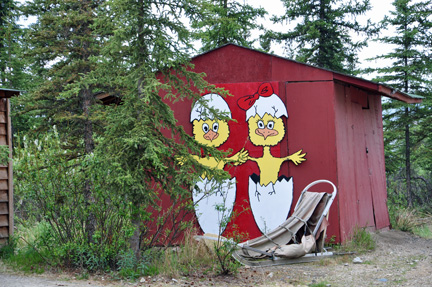 |
Below: The door to Chicken
Creek Cafe and the service call button |
|
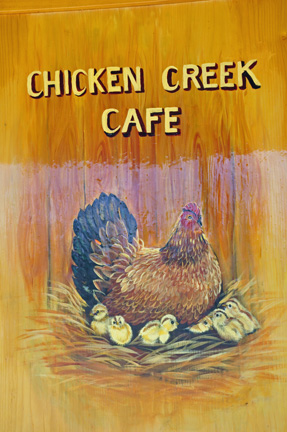 |
 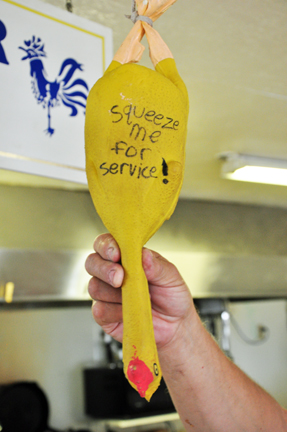 |
| Chicken, Alaska - According to the 2008 Milepost book, (which tourists should buy each year) there is no city water, sewer, or electric service in Chicken; it does have wells, generators and outhouses. Chicken was supposedly named by early miners who wanted to name their camp ptarmigan, but were unable to spell it and settled instead for chicken, the common name in the north for the ptarmigan bird. Chicken is perhaps best known as the home of the late Ann Purdy, whose book, Tisha, was based on her experiences as a young schoolteacher in the Bush. | |
| The Pedro Dredge No. 4 operated on Chicken Creek between 1959 and 1967, after mining Pedro Creek outside Fairbanks from 1938 until 1959. It was then purchased and moved with other mining equipment down to Chicken in 1998 as a tourist attraction and was put on the National Register of Historic Places in 2006. Tours are available. | |
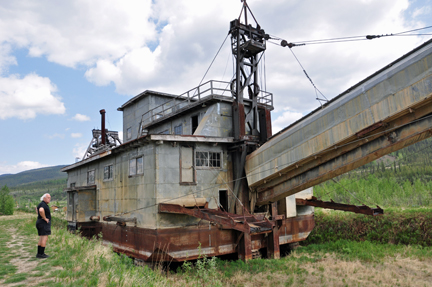 |
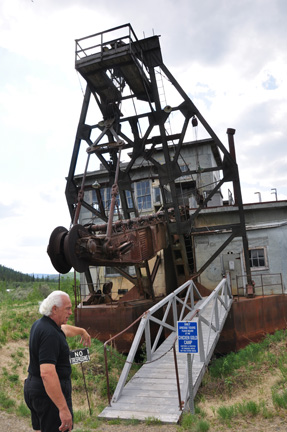 |
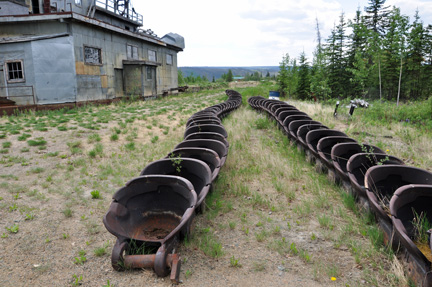 |
|
 Mining dredges were used in Alaska and Yukon
from the turn-of-the-century to the 1950's. The dredges were land-locked
floating machines, digging ponds that allowed them to float across the area
to be mined. They operated 24 hours a day from late April or early may and
ending in November. The bucket-line dredge used a continuous line of buckets
called the "digging ladder" (shown above) to scrape the bottom
and edge of the pond. The buckets carried the mud and rock to a screening
area, where the heavier metal particles were separated from the rest of
the material. After the metal was captured, the waste rock - "tailings"
- would be deposited out the back. Mining dredges were used in Alaska and Yukon
from the turn-of-the-century to the 1950's. The dredges were land-locked
floating machines, digging ponds that allowed them to float across the area
to be mined. They operated 24 hours a day from late April or early may and
ending in November. The bucket-line dredge used a continuous line of buckets
called the "digging ladder" (shown above) to scrape the bottom
and edge of the pond. The buckets carried the mud and rock to a screening
area, where the heavier metal particles were separated from the rest of
the material. After the metal was captured, the waste rock - "tailings"
- would be deposited out the back. |
|
| There is a post office in Chicken with twice weekly mail service. Cell phone service was sporadic. There is even a small airport. A big attraction in Chicken is looking for gold. | |
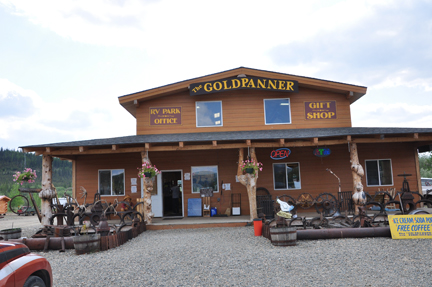 |
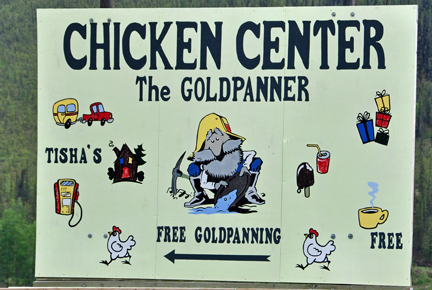 |
| Above: The Goldpanner is the RV Park office and gift shop. It provides free coffee, and has a regular washroom with flush toilets. | |
|
|
|||||||||||||||||||||||||||||||||||||||||||